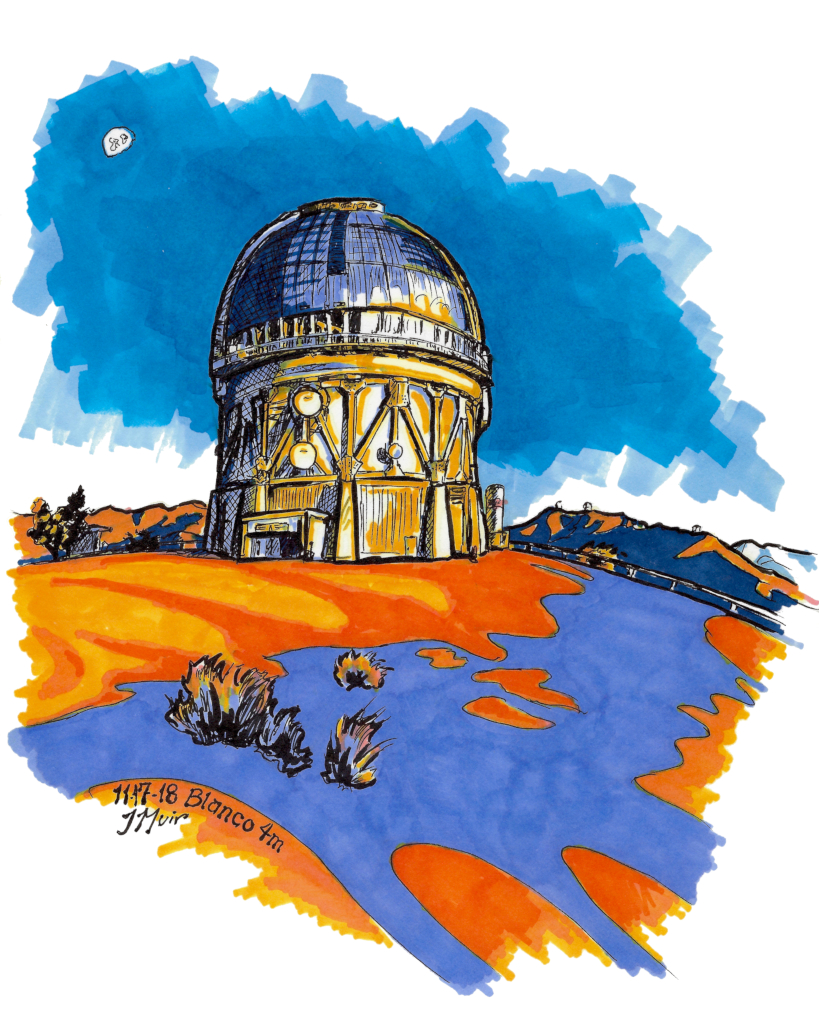I drew this picture of the Blanco Telescope while at CTIO on shift for the Dark Energy Survey in November, 2018. I submitted it as part of the #DESendofnights social media posts commemorating the end of six years of observing for the survey. The drawing was a finalist in the 2019 Art of Science competition organized by the Stanford Materials Research Society.

With my #DESendofnights submission, I included this text:
I just got done with an observing shift for DES and am on my way back to Michigan to celebrate Thanksgiving with my family. While sitting in the Santiago airport, I’m reflecting on what a unique and rewarding experience working an observing shift for DES has been, and am grateful to have had the opportunity. I’m a theorist, so usually when I work with data from DES, it’s already been significantly processed thanks to the effort of many other members of the DES collaboration. Getting the chance to spend time in the telescope control room makes me feel all the more appreciative of the work they put in, and of what a team effort it is to do the science it takes to go from CCD readouts from DECam, to weak lensing and galaxy clustering measurements, to constraints on the properties of dark energy.
I also really loved being able to watch the sunsets from the top of Cerro Tololo: I’m attaching a sketch of the Blanco telescope that I started while sitting on the mountaintop and waiting for the sun to go down. The Blanco Telescope, which collects data for DES is in the foreground. The mountain in the background on the right is Cerro Pachón, and the little bumps on it are other telescope domes. From left to right they are the SOAR telescope (which I remember learning about in my intro astronomy class at Michigan State University!), Gemini South, and the Large Synoptic Survey Telescope (also known as LSST, currently under construction).
A higher resolution version of the drawing is available.